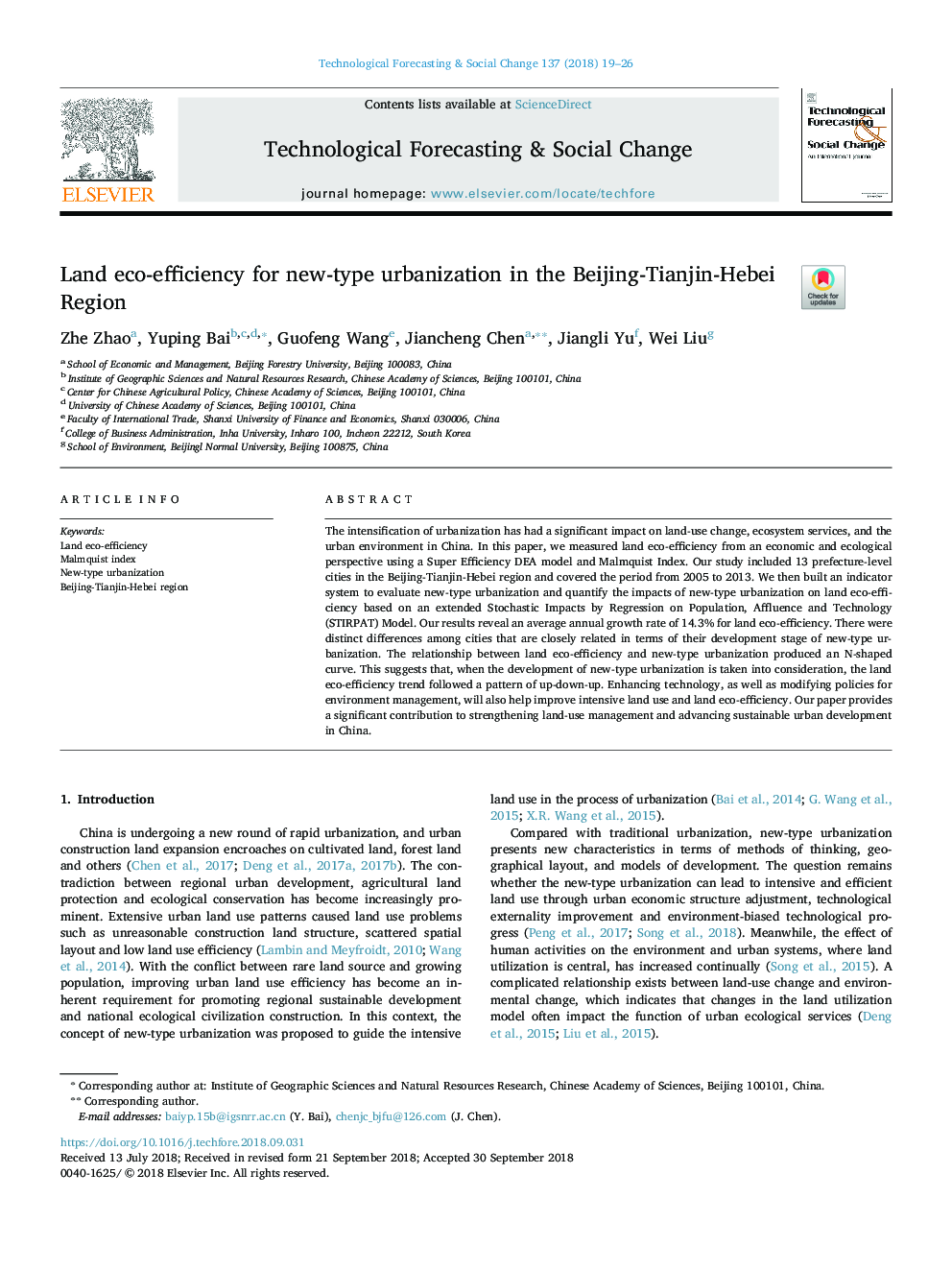| Article ID | Journal | Published Year | Pages | File Type |
|---|---|---|---|---|
| 11263137 | Technological Forecasting and Social Change | 2018 | 8 Pages |
Abstract
The intensification of urbanization has had a significant impact on land-use change, ecosystem services, and the urban environment in China. In this paper, we measured land eco-efficiency from an economic and ecological perspective using a Super Efficiency DEA model and Malmquist Index. Our study included 13 prefecture-level cities in the Beijing-Tianjin-Hebei region and covered the period from 2005 to 2013. We then built an indicator system to evaluate new-type urbanization and quantify the impacts of new-type urbanization on land eco-efficiency based on an extended Stochastic Impacts by Regression on Population, Affluence and Technology (STIRPAT) Model. Our results reveal an average annual growth rate of 14.3% for land eco-efficiency. There were distinct differences among cities that are closely related in terms of their development stage of new-type urbanization. The relationship between land eco-efficiency and new-type urbanization produced an N-shaped curve. This suggests that, when the development of new-type urbanization is taken into consideration, the land eco-efficiency trend followed a pattern of up-down-up. Enhancing technology, as well as modifying policies for environment management, will also help improve intensive land use and land eco-efficiency. Our paper provides a significant contribution to strengthening land-use management and advancing sustainable urban development in China.
Related Topics
Social Sciences and Humanities
Business, Management and Accounting
Business and International Management
Authors
Zhe Zhao, Yuping Bai, Guofeng Wang, Jiancheng Chen, Jiangli Yu, Wei Liu,
